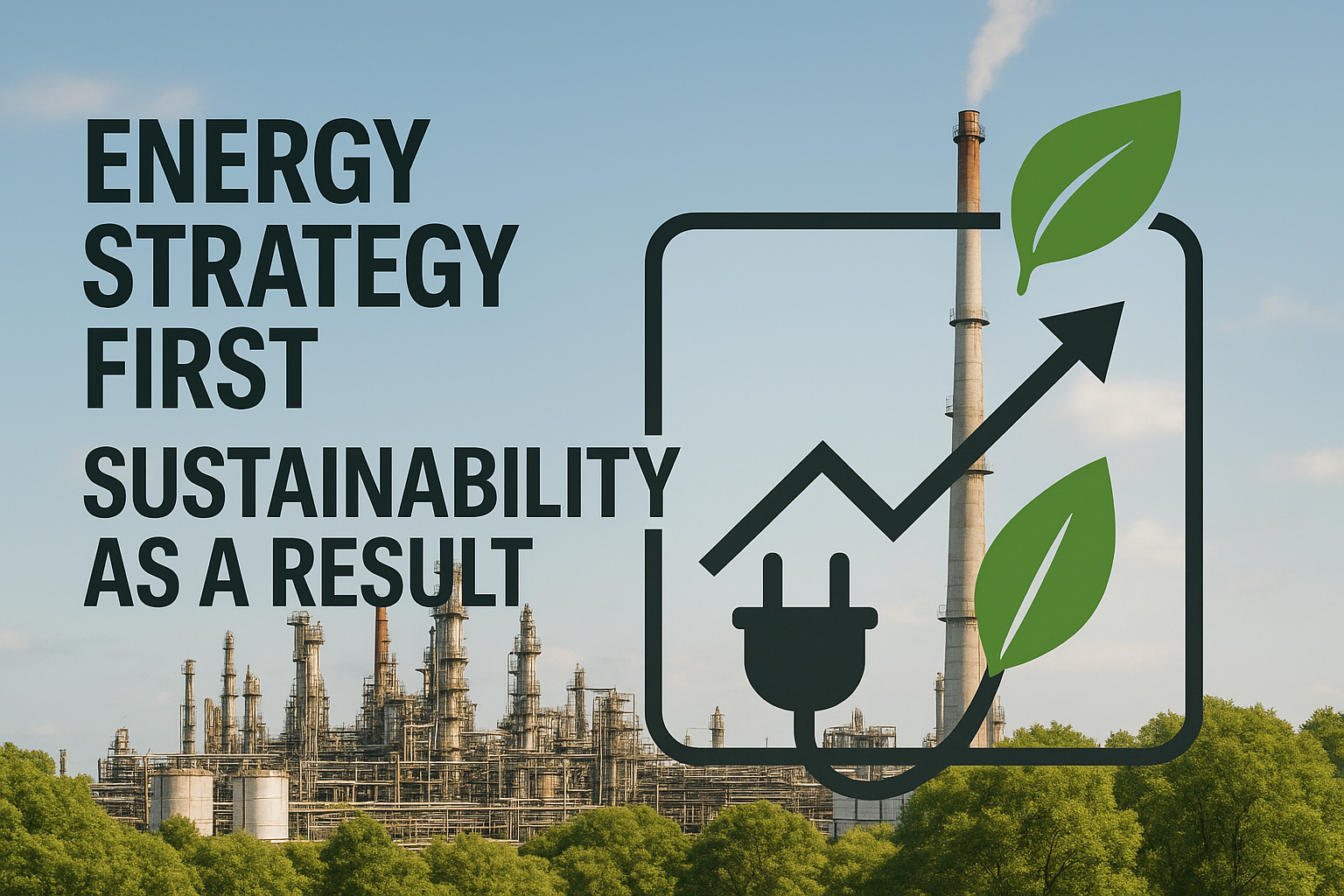A mining concentrator operating below nameplate capacity loses money every minute. Data from throughput mining shows that lifting utilization by only 2–5% can match the output of a new grinding line. Because depreciation, labor, and maintenance dominate operating spend, every lost tonne erodes margin directly.
Yet shifts in ore hardness, grade, and moisture make it hard to keep the plant at full pace. Closed Loop AI Optimization uses real-time data and self-learning models to re-tune setpoints minute by minute, keeping utilization near its true ceiling.
The following sections explore the financial impact of underutilized mining operations, identify how constraints shift throughout processing circuits, examine why conventional approaches fall short, and present how AI-driven optimization can unlock sustainable throughput improvements.
Why Mining Capacity Utilization Determines Survival
When most of your site’s outlay, depreciation on heavy equipment, salaries for crews, and routine maintenance, stays constant whether the plant runs flat-out or creeps along, every lost tonne erodes margin straight from the bottom line. Underutilization spreads those fixed dollars over fewer units, driving the cost per tonne higher than competitors who keep circuits humming.
Processing variability makes the problem worse. Power fluctuations at a mill, blockages in the crusher, or uneven haul-truck arrivals translate into minute-by-minute swings in feed rate. As utilization dips, cost per tonne rises while sales volumes fall, a double hit that directly impacts mine production capacity metrics.
The ripple effects are immediate. Haul trucks sit idle and burn fuel without adding output. Lower feed stability often leads to sub-optimal grinding conditions and poorer downstream recovery, cutting metal payback just when volumes are already down. With thinner margins, operations become sensitive to commodity-price moves, forcing defensive cash conservation that stalls growth projects.
Competitors that sustain higher capacity utilization compound efficiency advantages over time, lower unit costs fund reinvestment, while stable production secures customer contracts. In a cyclical market where price swings are beyond anyone’s control, maintaining high utilization is a lever you can control, and the lever that separates long-term winners from mines that merely survive the next dip.
The Complex Bottlenecks Constraining Mining Capacity
Understanding why plants struggle to reach full potential requires examining the intricate web of constraints that shift throughout each operating period. Ore moves through a tight chain of circuits, including a primary crusher, SAG and ball mills, cyclones, flotation cells, and finally, dewatering.
Any one of them can throttle the entire operation. When coarse feed overwhelms the crusher, downstream mills idle; if a SAG motor nears its power ceiling, cyclone feed falls, and flotation residence time collapses. The slowest step always dictates plant processing rates.
The trouble is that ore never arrives in a steady state. Hardness spikes push mill draws to the limit, while subtle mineralogy shifts stretch flotation kinetics. Even moisture swings can halve crusher rates, a risk magnified when blending inconsistencies slip through the stockpile.
Beyond the obvious choke points, site-wide services often emerge as silent constraints. Water balance policies, finite tailings capacity, or power grid limitations can all cap production just as surely as a worn grate. Because these limits migrate with every shovel bite, static set-points and once-a-shift adjustments leave significant tonnes untapped. Continuous, adaptive control is the only way to keep the active constraint fully loaded without triggering the next one.
Why Manual Control Cannot Optimize Variable Ore
Traditional operations face fundamental limitations when dealing with constantly changing conditions. When plants rely on fixed set-points written during commissioning, every shift starts with yesterday’s assumptions. Operators naturally maintain buffers between operating limits and actual equipment capacity to prevent trips, so plants seldom reach their nameplate capacity.
Feedback between grinding and flotation circuits travels through sample results and radio calls, meaning adjustments come hours after a hardness spike has choked the SAG mill or a sudden sulphide-rich pocket has stalled the rougher cells.
Traditional advanced process control helps, yet it still operates in loops that react only after sensors drift outside alarms. Without integrated, real-time ore data, settings stay conservative, and circuit tuning happens in isolation. The result is wide shift-to-shift performance swings.
Every lost tonne cascades through the operation, haul trucks idle, recovery slips, and energy per unit climbs, making risk-averse manual control an expensive constraint against variable ore conditions.
How AI Maps Your Operation’s True Capacity Frontier
Artificial intelligence offers a fundamentally different approach by starting with what historical plant data reveals. Years of sensor values capture how ore hardness, mineralogy, and grade interact with every motor load, pump pressure, and reagent dose. Modern industrial AI streams that archive, cleaning gaps rather than waiting for perfect data quality, and stitch it together with geology logs and sample results to form a living, high-resolution picture of cause and effect.
Like a digital twin, the resulting virtual replica can learn site-specific capacity limits through AI models trained on past performance, multivariable analysis across crushing, grinding, and flotation, and reinforcement learning (RL) that safely probes potential scenarios. Instead of relying on conservative nameplate ratings, this approach can reveal the real frontier where processing rates and recovery peak without breaching equipment constraints.
Because ore conditions shift hourly, models continue learning, refreshing parameters in real time. Platforms can run these calculations on-site, ensuring remote mines receive second-by-second guidance even when connectivity is limited.
Real-Time Optimization That Maximizes Every Tonne
This advanced capability builds on AI mapping to deliver continuous performance improvements. Closed Loop AI Optimization continuously monitors every sensor across your plant, learning from historical and real-time data to recalculate optimal set-points every few seconds.
By writing those adjustments directly back to the control system, it fine-tunes crusher gaps, adjusts SAG mill speed, maintains cyclone pressure, and modifies reagent flow rates, all without waiting for the next shift review. The result is a dynamic model of your operation that adapts as plant conditions evolve, not hours later when production losses have already accumulated.
Consider two scenarios mining operations face daily. When the digital model detects an ore hardness spike five minutes before it reaches the mill, it can reduce conveyor speed just enough to prevent overloading, maintaining steady processing rates rather than forcing an emergency shutdown. Conversely, when mineralogy analysis indicates declining flotation kinetics ahead, the system can increase air flow to rougher cells before recovery rates drop.
The algorithm maintains your active bottleneck at optimal capacity while monitoring downstream constraints, balancing competing priorities: maximizing output, protecting product quality, controlling energy consumption, and safeguarding equipment.
These decisions are executed in seconds, far faster than human response time, through real-time data integration and predictive modeling proven across mining operations. With this capability, plants can process every possible tonne, even as ore characteristics shift throughout each operating period.
Building Confidence Through Measured Implementation
Transitioning to autonomous optimization requires a structured approach that allows you to evaluate value at every step while keeping operators in control. Moving to autonomous optimization follows a structured journey that lets you evaluate value at every step while keeping operators in control. A disciplined approach accelerates ROI and builds the trust needed for full automation.
The implementation follows three key phases that progressively build confidence:
- Monitor-only phase: A model functioning like a digital twin shadows the plant, validating data quality and surfacing hidden constraints without touching control loops.
- Advisory recommendations: Once accuracy is proven, the model suggests set-point moves that operators can accept, modify, or reject, creating a low-risk feedback channel.
- Autonomous closed loop: After KPIs improve consistently, the model writes set-points back to the control system in real-time, still guarded by mechanical limits and safety interlocks.
At each gate, you calculate a baseline of the previous performance window, document uplift, and widen the scope only when improvements persist. Choosing low-risk, high-impact targets, such as reagent dosing or cyclone pressure, helps demonstrate quick wins while larger datasets are still maturing.
Most mines undergo a multi-stage process from proof of concept to autonomous control, often taking 18 to 36 months. Mechanical safeguards, operator training sessions, and cross-functional steering teams round out the governance needed to scale with confidence.
How Imubit Transforms Mining Capacity Utilization
Closed-loop AI can keep every tonne moving efficiently. By learning from live sensor streams and decades of plant data, Imubit’s Closed Loop AI Optimization (AIO) technology continuously adjusts crusher gaps, mill speeds, and reagent dosing to settings that can maintain full bottleneck loading.
Mining operations adopting this approach can expect 2–5 percent higher sustained processing rates while stabilizing recovery and energy use, as demonstrated in field results from multiple optimization deployments.
This uplift can translate into lower cost per tonne, tighter energy intensity, and extra margin headroom when commodity prices soften. Imubit pairs its AIO engine with the Optimizing Brain™ for your plant, delivering real-time action and built-in safeguards.
Mining leaders ready to see the impact can schedule a complimentary proof-of-value consultation today and map the fastest path to autonomous, high-utilization performance.




